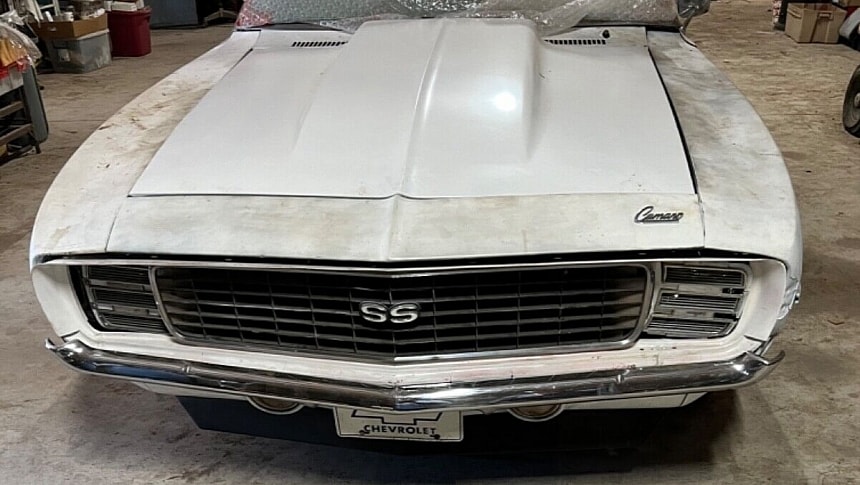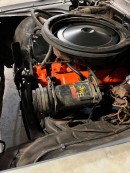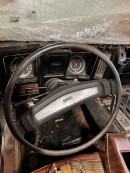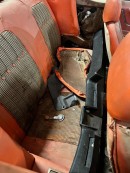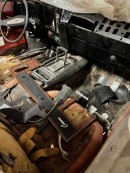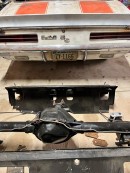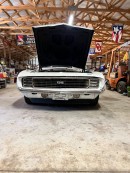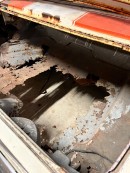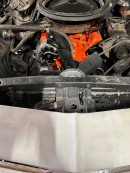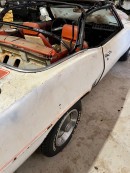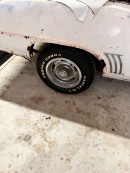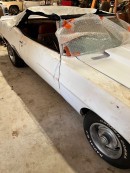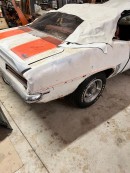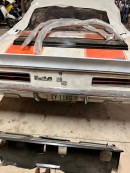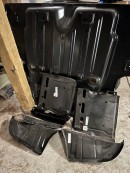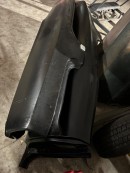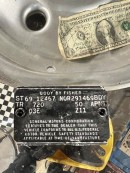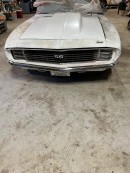Launched in 1966, the Chevrolet Camaro was GM's first pony car. And just one year later, it became the first bowtie-badged vehicle to pace the Indianapolis 500. In 1969, it also became the first nameplate to pace the iconic race twice.
The Camaro has since led the Indy 500 pack nine times, and it's the second most-used pace car at this event. The top spot goes to another Chevrolet, the Corvette, which paced the Indy 500 no fewer than 20 times between 1978 and 2023.
Some of these pace cars also spawned official replicas sold to the public. Chevrolet built only 100 units in 1967 but increased pace car production to 3,675 examples in 1969. Not quite as rare as the 1967 edition, right? Well, even so, the 1969 version is also a hard-to-find classic simply because many of these drop-tops had fallen into disrepair over the years. The derelict example you see here is one of them.
Most likely locked up in a barn for a very long time, this Camaro is one of those classics that won't find its way back on the road unless it gets a complete restoration. The sheet metal is in pretty bad shape, while the trunk panel is almost gone due to rust. It looks like the floor pans have been repaired in the past, but they still need some work.
Sadly enough, the interior doesn't look very good either. While the original houndstooth upholstery is still in place, it can no longer be saved with cleaning products. Okay, so maybe the rear bench could get a second chance, but the front seats are too far gone. And that's a shame because these Hugger Orange interiors looked fabulous when new.
There's bad news under the hood as well. Although the Z11 tag is still with the car, the numbers-matching V8 engine is long gone. According to the seller, this Camaro relies on a period-correct unit. But that's not necessarily good news because the replacement V8 is locked up. The automatic gearbox is still in there, but it probably needs a rebuild as well.
If you're unfamiliar with this factory pace car replicas, they left the assembly line with the 350-cubic-inch (5.7-liter) V8 that powered the SS model at the time. They delivered 300 horsepower when new. The pace cars used in the actual race had the larger 396-cubic-inch (6.5-liter) V8 units rated at 375 horsepower.
While it may look hopeless at first glance, this Camaro comes with all-new sheet metal purchased by the owner before he decided against the restoration (he found a better pace car). The car and the extra parts are in Oklahoma and are being offered via a no-reserve action.
The listing has just one bid at $25,000 with less than a day to go. Is this pace car worth a second chance? Here's a nice unrestored version if you want to know how it should look like.
Some of these pace cars also spawned official replicas sold to the public. Chevrolet built only 100 units in 1967 but increased pace car production to 3,675 examples in 1969. Not quite as rare as the 1967 edition, right? Well, even so, the 1969 version is also a hard-to-find classic simply because many of these drop-tops had fallen into disrepair over the years. The derelict example you see here is one of them.
Most likely locked up in a barn for a very long time, this Camaro is one of those classics that won't find its way back on the road unless it gets a complete restoration. The sheet metal is in pretty bad shape, while the trunk panel is almost gone due to rust. It looks like the floor pans have been repaired in the past, but they still need some work.
Sadly enough, the interior doesn't look very good either. While the original houndstooth upholstery is still in place, it can no longer be saved with cleaning products. Okay, so maybe the rear bench could get a second chance, but the front seats are too far gone. And that's a shame because these Hugger Orange interiors looked fabulous when new.
There's bad news under the hood as well. Although the Z11 tag is still with the car, the numbers-matching V8 engine is long gone. According to the seller, this Camaro relies on a period-correct unit. But that's not necessarily good news because the replacement V8 is locked up. The automatic gearbox is still in there, but it probably needs a rebuild as well.
If you're unfamiliar with this factory pace car replicas, they left the assembly line with the 350-cubic-inch (5.7-liter) V8 that powered the SS model at the time. They delivered 300 horsepower when new. The pace cars used in the actual race had the larger 396-cubic-inch (6.5-liter) V8 units rated at 375 horsepower.
While it may look hopeless at first glance, this Camaro comes with all-new sheet metal purchased by the owner before he decided against the restoration (he found a better pace car). The car and the extra parts are in Oklahoma and are being offered via a no-reserve action.
The listing has just one bid at $25,000 with less than a day to go. Is this pace car worth a second chance? Here's a nice unrestored version if you want to know how it should look like.
